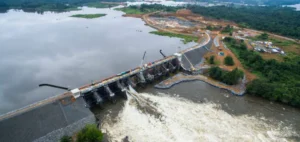Hydro Tasmania has received approval from the Federal Government to begin work on upgrading the Edgar Dam in southwest Tasmania. This decision, taken by the office of the Minister of the Environment, Tanya Plibersek, marks a crucial step towards improving the state’s energy infrastructure.
Context and strategic importance
The Edgar dam, built in 1972, is an integral part of the Gordon-Pedder system, which feeds the Gordon hydroelectric power station, Tasmania’s largest with a capacity of 432MW. The plant covers around 13% of the state’s annual energy needs, playing a vital role in regional energy security. In addition, Australia is banking on its natural potential to improve the hydropower sector, as demonstrated by the Snowy 2.0 project, which is nevertheless behind schedule.
Upgrading the dam is essential to ensure the reliability and longevity of Tasmania’s energy infrastructure. Jesse Clark, General Manager of Assets and Infrastructure at Hydro Tasmania, said, “This approval is the result of several years of planning and consultation. We are ready to start work and improve the safety of our facilities.”
Technical and logistical aspects
Modernization work will include the addition of new gravel filters and rock fill to improve the dam’s seismic resistance. These improvements are necessary because of the dam’s proximity to the Lake Edgar fault, initially considered inactive but now recognized for its seismic potential.
Hydro Tasmania plans to issue a call for tenders to select specialist construction companies, with work spread over two consecutive summers. Logistical measures include careful management of resources and materials, and strict controls to minimize service interruptions.
Economic and industrial implications
The Edgar Dam modernization project represents a significant investment in Tasmania’s energy infrastructure. The project will not only enhance the safety and efficiency of power generation, but will also have a positive economic impact on the region, generating jobs and stimulating local economic activity.
The planned improvements will help ensure stable, sustainable energy production, which is essential to support Tasmania’s economic growth. By expanding its facilities, Hydro Tasmania is positioning itself as a key player in Australia’s renewable energy sector.
The project is part of a wider strategy to modernize and secure Tasmania’s energy infrastructure, while meeting growing demands for reliability and sustainability.
The Edgar Dam upgrade demonstrates Hydro Tasmania’s commitment to investing in critical infrastructure, ensuring the region’s long-term energy security. This initiative reflects a proactive approach to current and future energy challenges, and underlines the importance of maintaining robust, reliable infrastructures.






















